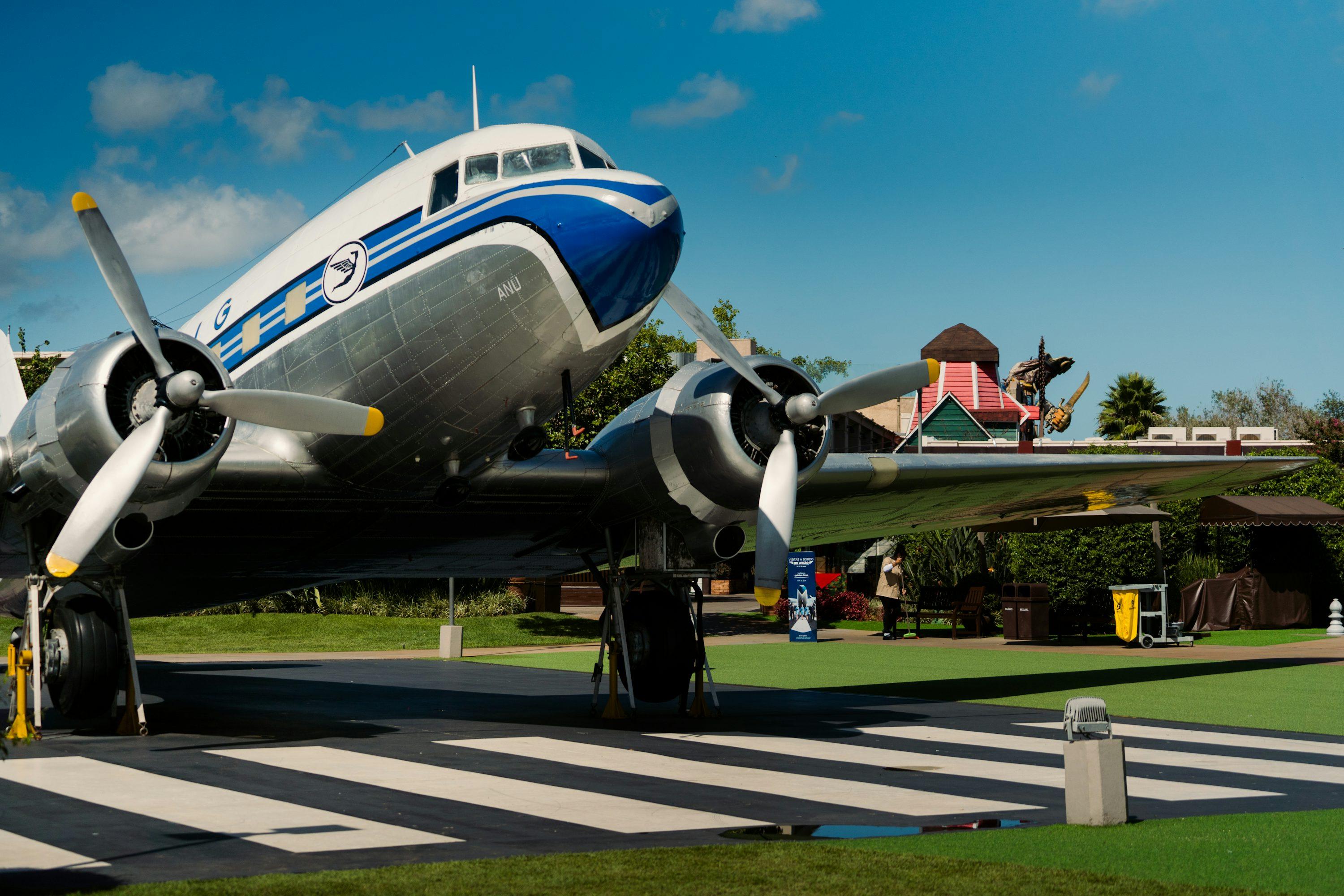
Airline Passenger Travel Statistics 2024-2025: Navigating the Skies
Airline passenger travel is a vital component of the global economy, connecting people and cultures across vast distances. The airline industry plays a critical role in tourism, business, and personal travel. Understanding the latest airline passenger travel statistics is essential for airlines, airports, travel agencies, and businesses that rely on air transportation.
This article presents key airline passenger travel statistics for 2024-2025, offering a data-driven overview of passenger volume, airline performance, travel trends, and the evolving aviation landscape. From post-pandemic recovery to technological advancements, these insights provide a comprehensive picture of modern air travel.
Airline Industry Statistics
Let's begin with an overview of the airline industry's overall performance and key metrics.
- The global airline industry is projected to carry over 4.7 billion passengers in 2024.
- Global airline industry revenues are expected to reach $964 billion in 2024, nearing the trillion-dollar mark.
- In 2023, airlines globally operated approximately 38.9 million flights.
- The Asia-Pacific region is expected to be the largest aviation market in the next 20 years, driven by growth in countries like China and India.
- Low-cost carriers (LCCs) continue to grow, accounting for an increasing share of passenger traffic globally.
- Aircraft manufacturers like Boeing and Airbus are facing significant backlogs, indicating strong future demand for air travel.
- Sustainable aviation fuel (SAF) adoption is a growing focus, with airlines and industry stakeholders working to reduce carbon emissions.
- Digitalization and technology are transforming air travel, with advancements in areas like biometric identification, AI-powered customer service, and enhanced in-flight connectivity.
- Airline ancillary revenue, from baggage fees to seat selection, continues to be a significant revenue stream for airlines globally.
Passenger Volume and Demographics Statistics
Let's examine who is flying and how many people are taking to the skies.
- Domestic air travel is recovering strongly, with passenger numbers in many regions exceeding pre-pandemic levels.
- International air travel is also on a recovery trajectory, although some regions are lagging behind others due to varying travel restrictions and economic conditions.
- Business travel is returning, but the pace of recovery is slower compared to leisure travel, with remote work trends impacting corporate travel budgets.
- Leisure travel is a major driver of the current air travel recovery, with pent-up demand and a desire for experiences fueling vacation trips.
- Younger generations, particularly Millennials and Gen Z, are enthusiastic air travelers, prioritizing travel and experiences.
- Solo travel is a growing segment in air travel, with more people opting for independent journeys.
- Family travel remains a significant market, with airlines catering to families with services and amenities designed for family سفر.
Airline Operational Statistics
Let's delve into statistics related to airline operations and performance.
- On-time performance is a key metric for airlines, with global average on-time arrival rates fluctuating due to various factors like weather and air traffic congestion.
- Baggage handling performance is improving with technology and streamlined processes, but mishandled baggage remains a concern for passengers.
- Flight cancellation rates have been a point of focus, particularly during peak travel seasons and due to operational challenges faced by airlines.
- Aircraft load factors, representing the percentage of seats filled on flights, are a crucial indicator of airline efficiency and profitability, and are generally rising post-pandemic.
- Airfare prices are influenced by factors like fuel costs, demand, and competition, with average ticket prices showing fluctuations in recent years.
- Airport passenger satisfaction is a key focus for airports globally, with efforts to enhance the passenger experience through improved amenities and streamlined processes.
- Air cargo volumes are an important part of the aviation industry, impacting airline revenues and global supply chains.
Top Routes and Destinations Statistics
Where are people flying to and from? Let's look at popular routes and destinations.
- The busiest international air routes often connect major global cities in Asia, Europe, and North America.
- Domestic routes within large countries like the United States, China, and India also see substantial passenger traffic.
- Hub airports in major cities serve as key connecting points for global air travel, handling significant volumes of passengers.
- Leisure destinations, including beach resorts, major cities with cultural attractions, and national parks, are popular choices for air travelers.
- Business travel hubs continue to be important destinations, with major financial centers and corporate headquarters attracting frequent flyers.
- Emerging destinations are gaining popularity, with travelers seeking unique and off-the-beaten-path experiences accessible by air.
- Seasonal variations impact destination popularity, with winter destinations seeing surges in traffic during colder months and summer destinations becoming popular in warmer periods.
Passenger Experience and Technology Statistics
How is technology shaping the airline passenger experience?
- Mobile apps are essential for air travelers, used for booking, check-in, flight updates, and in-flight entertainment.
- In-flight Wi-Fi is increasingly expected by passengers, with airlines investing in connectivity to enhance the travel experience.
- Biometric technology is being implemented at airports to streamline security and boarding processes, improving efficiency and passenger flow.
- Self-service kiosks and automated bag drop systems are becoming more common at airports, empowering passengers and reducing wait times.
- Personalized travel experiences are being enabled by data analytics and AI, with airlines aiming to offer tailored services and offers to passengers.
- Contactless technologies, accelerated by the pandemic, are now prevalent in air travel, from mobile check-in to digital boarding passes and contactless payments.
- Social media plays a role in passenger communication and feedback, with airlines using platforms to engage with travelers and address customer service issues.
Challenges and Opportunities in Airline Passenger Travel Statistics
What are the key challenges and opportunities facing the airline passenger travel industry?
- Fuel price volatility remains a significant challenge for airlines, impacting profitability and airfare prices.
- Air traffic management modernization is crucial to address airspace congestion and improve flight efficiency, reducing delays and emissions.
- Airport infrastructure development is needed to accommodate growing passenger volumes and ensure smooth operations, particularly in rapidly growing aviation markets.
- Sustainability pressures are mounting, requiring airlines to invest in cleaner technologies, SAF, and carbon offsetting initiatives.
- Labor shortages and workforce challenges are impacting airline operations, requiring investment in training and recruitment to meet future demand.
- Cybersecurity threats are a growing concern, requiring airlines and airports to strengthen their digital defenses and protect passenger data.
- Geopolitical instability and economic uncertainties can impact air travel demand and airline profitability, creating a dynamic and sometimes unpredictable operating environment.
Actionable Strategies for Airlines and Travel Businesses using Passenger Travel Statistics
Here are key strategies for airlines and related businesses to leverage airline passenger travel statistics:
- Optimize flight schedules and routes: Utilize data on passenger demand and route performance to maximize load factors and profitability.
- Enhance the passenger experience: Invest in technologies and services that improve on-time performance, baggage handling, and overall customer satisfaction.
- Personalize marketing and offers: Leverage passenger data to provide tailored travel recommendations and targeted promotions.
- Invest in sustainable practices: Adopt SAF, explore fuel-efficient technologies, and communicate sustainability efforts to environmentally conscious travelers.
- Improve operational efficiency: Implement digital solutions and automation to streamline airport processes and reduce operational costs.
- Focus on customer loyalty: Enhance loyalty programs and customer service to retain passengers in a competitive market.
- Adapt to changing travel trends: Monitor evolving passenger preferences, such as the growth of solo travel and leisure, to tailor offerings accordingly.
Bottom Line
Airline passenger travel is a dynamic and essential global industry, constantly evolving to meet changing demands and technological advancements. Airline passenger travel statistics provide critical insights for airlines, airports, and the broader travel ecosystem to navigate the complexities of the industry and capitalize on growth opportunities. By understanding passenger trends, operational metrics, and emerging challenges, stakeholders can make informed decisions to enhance efficiency, improve passenger experiences, and ensure the sustainable future of air travel.


